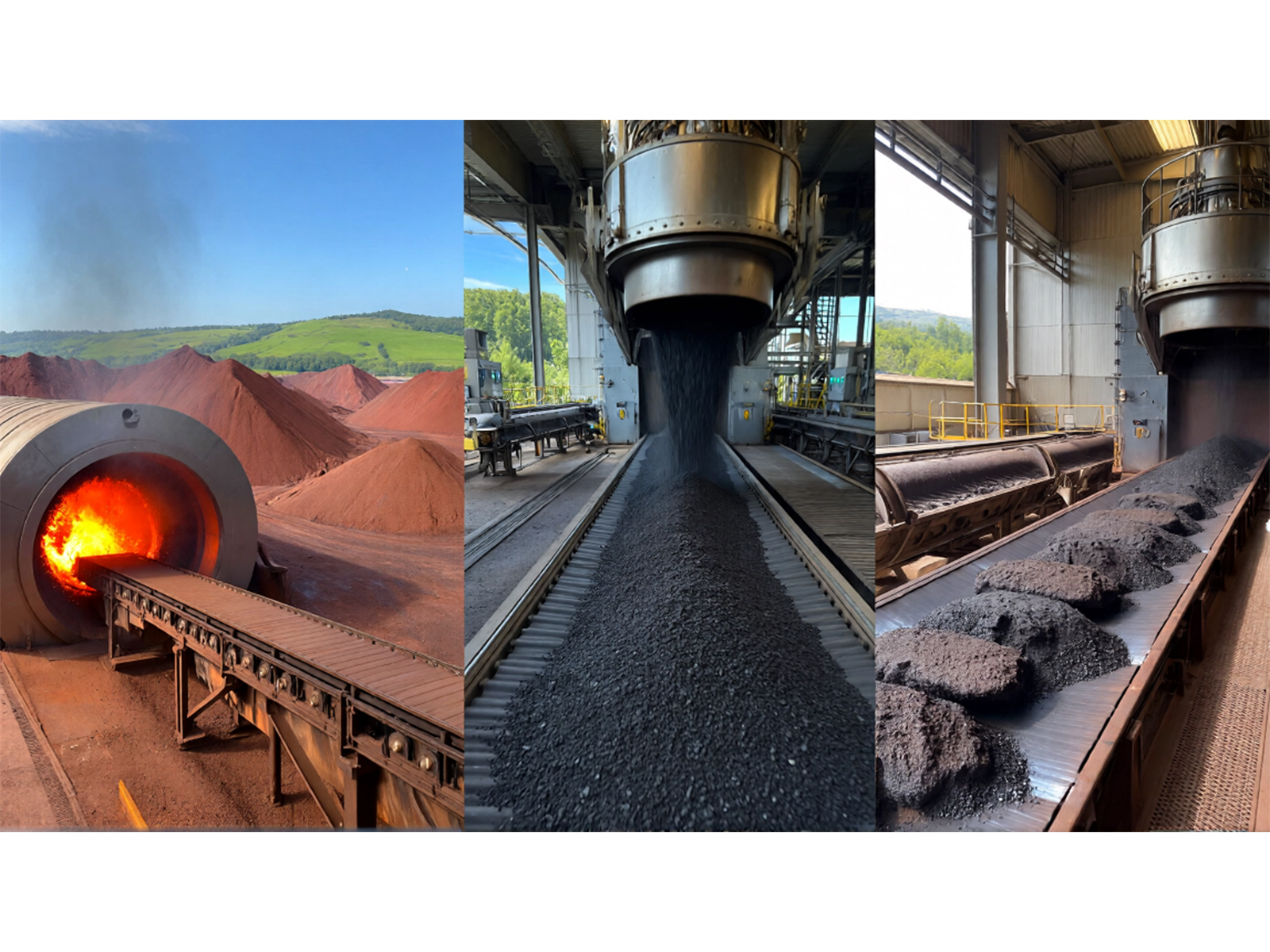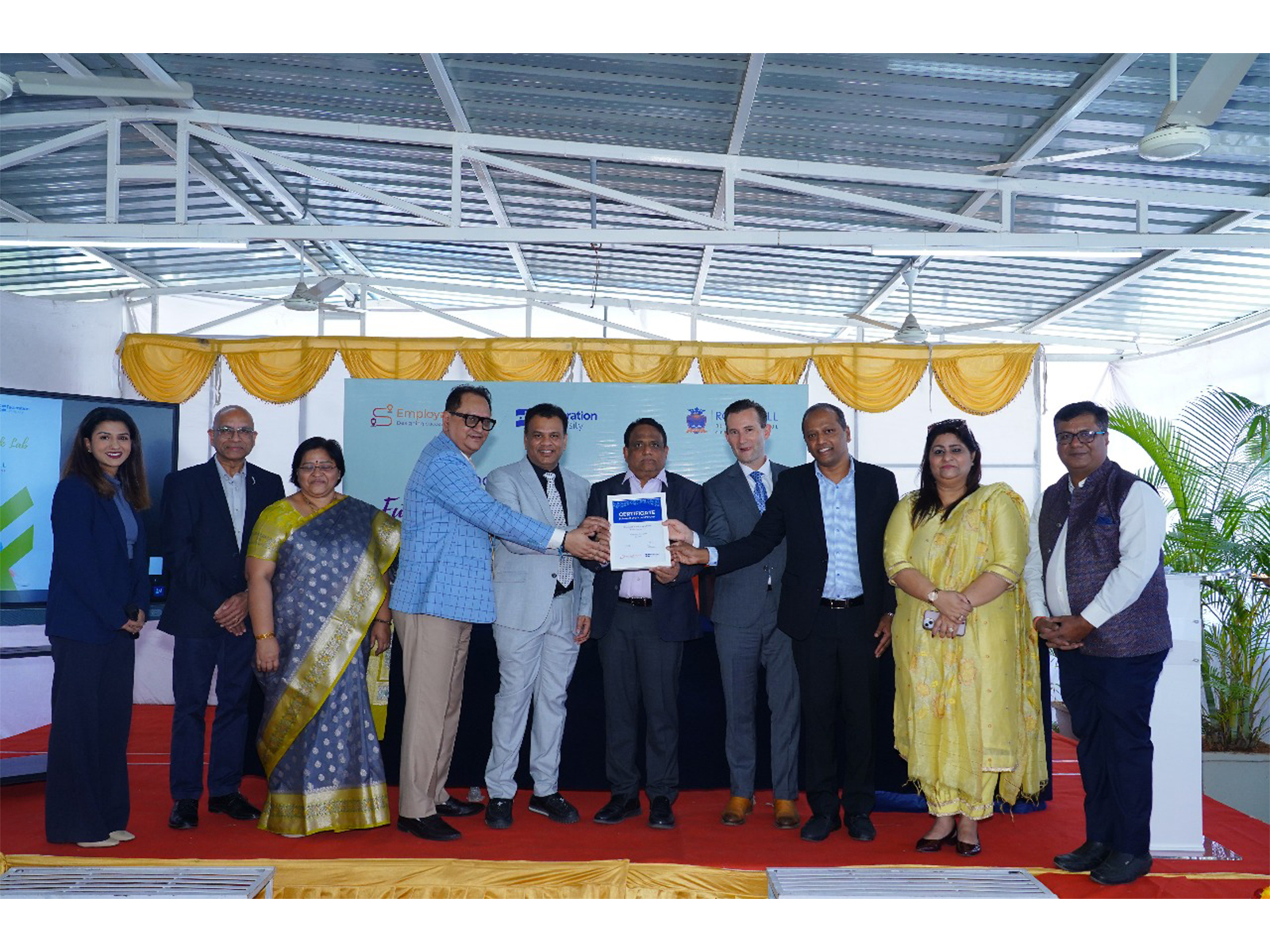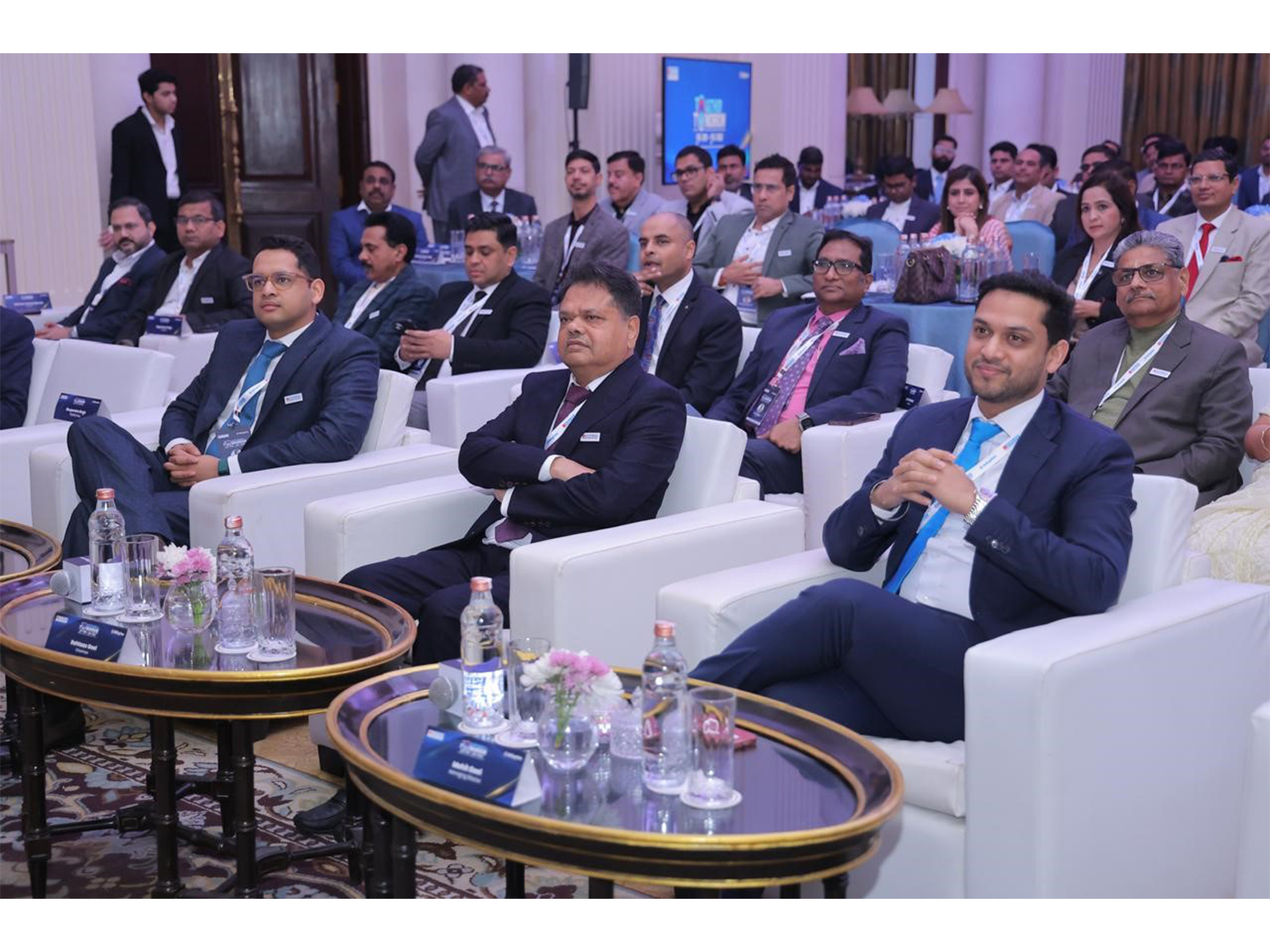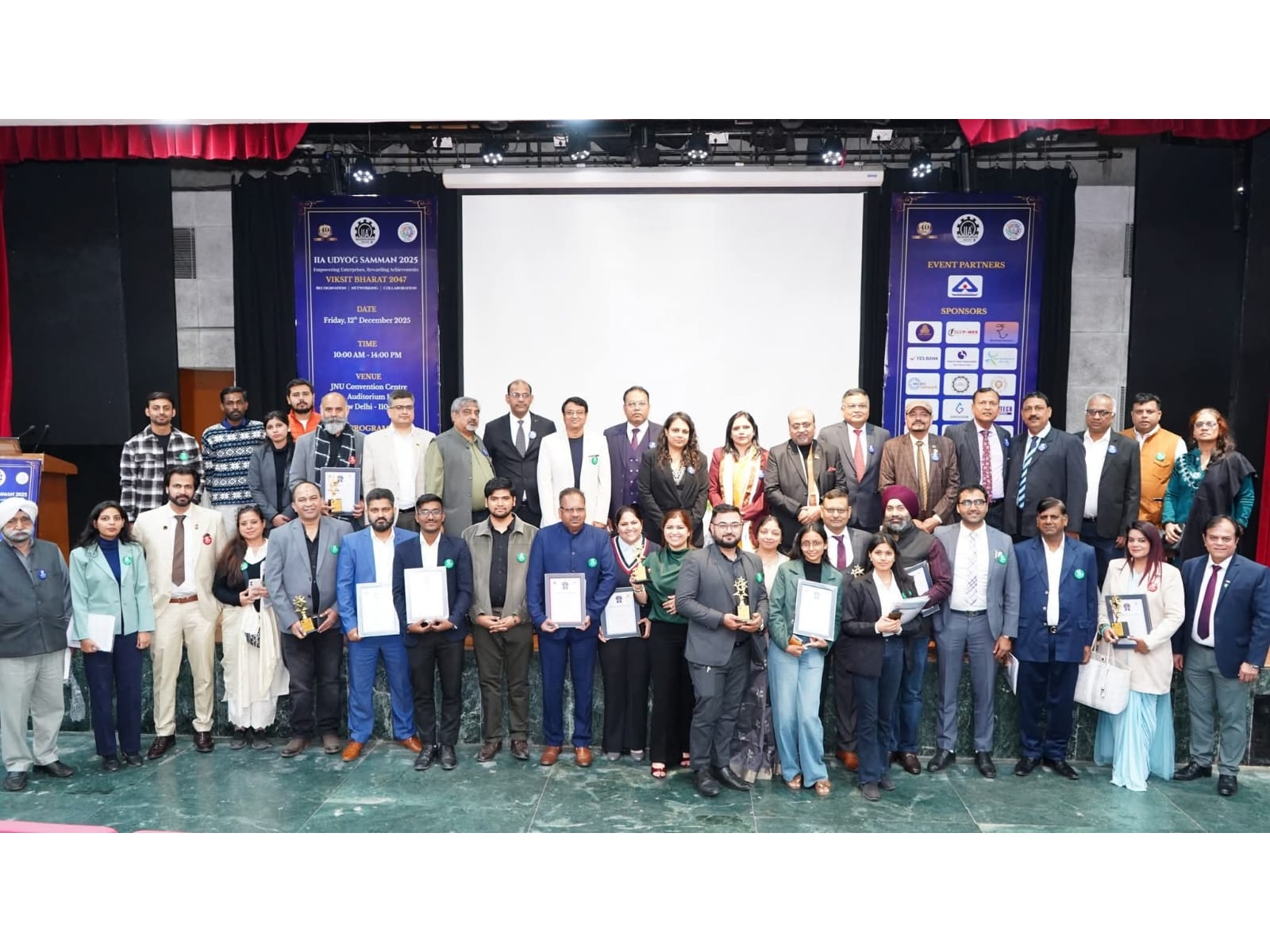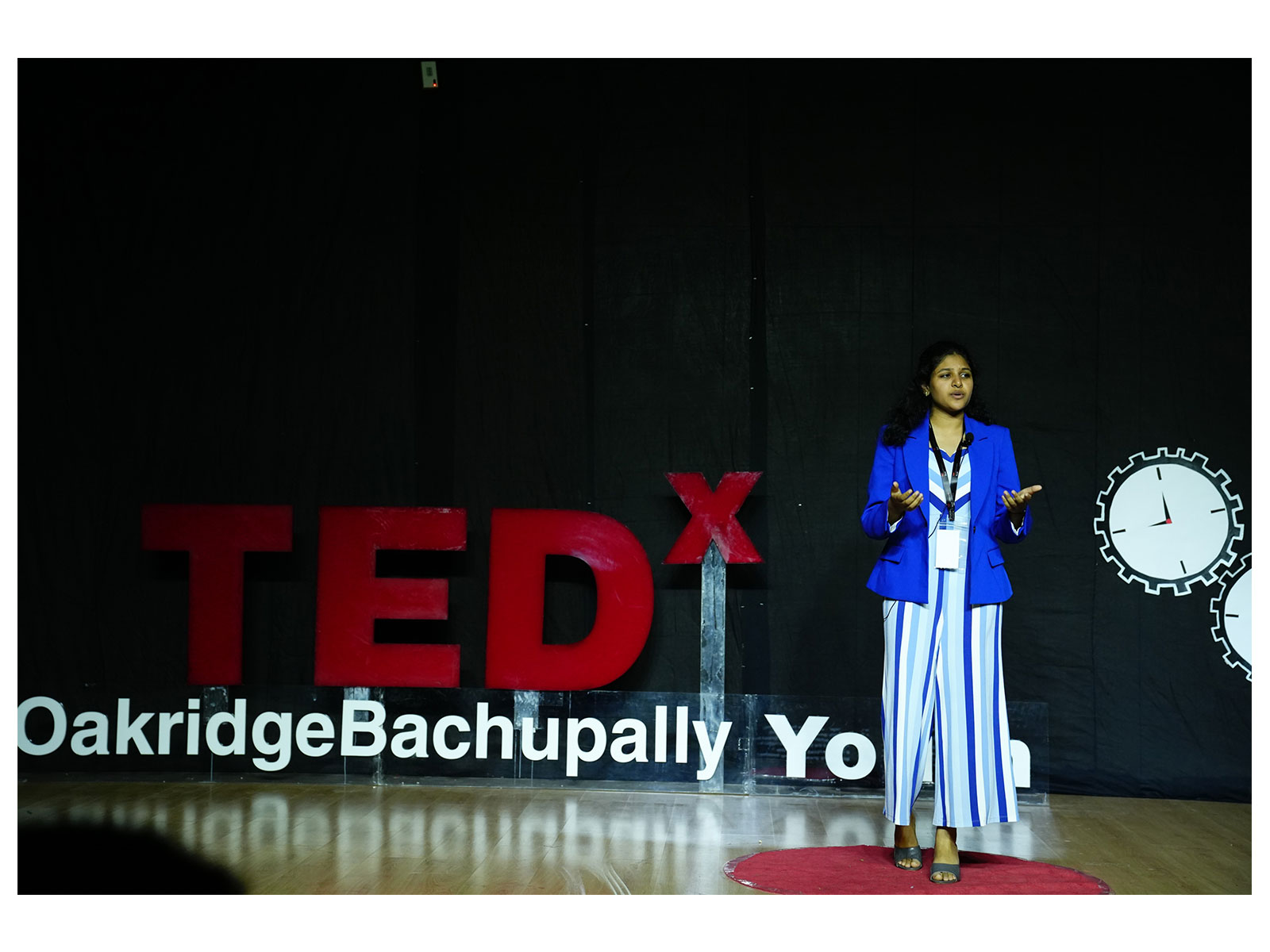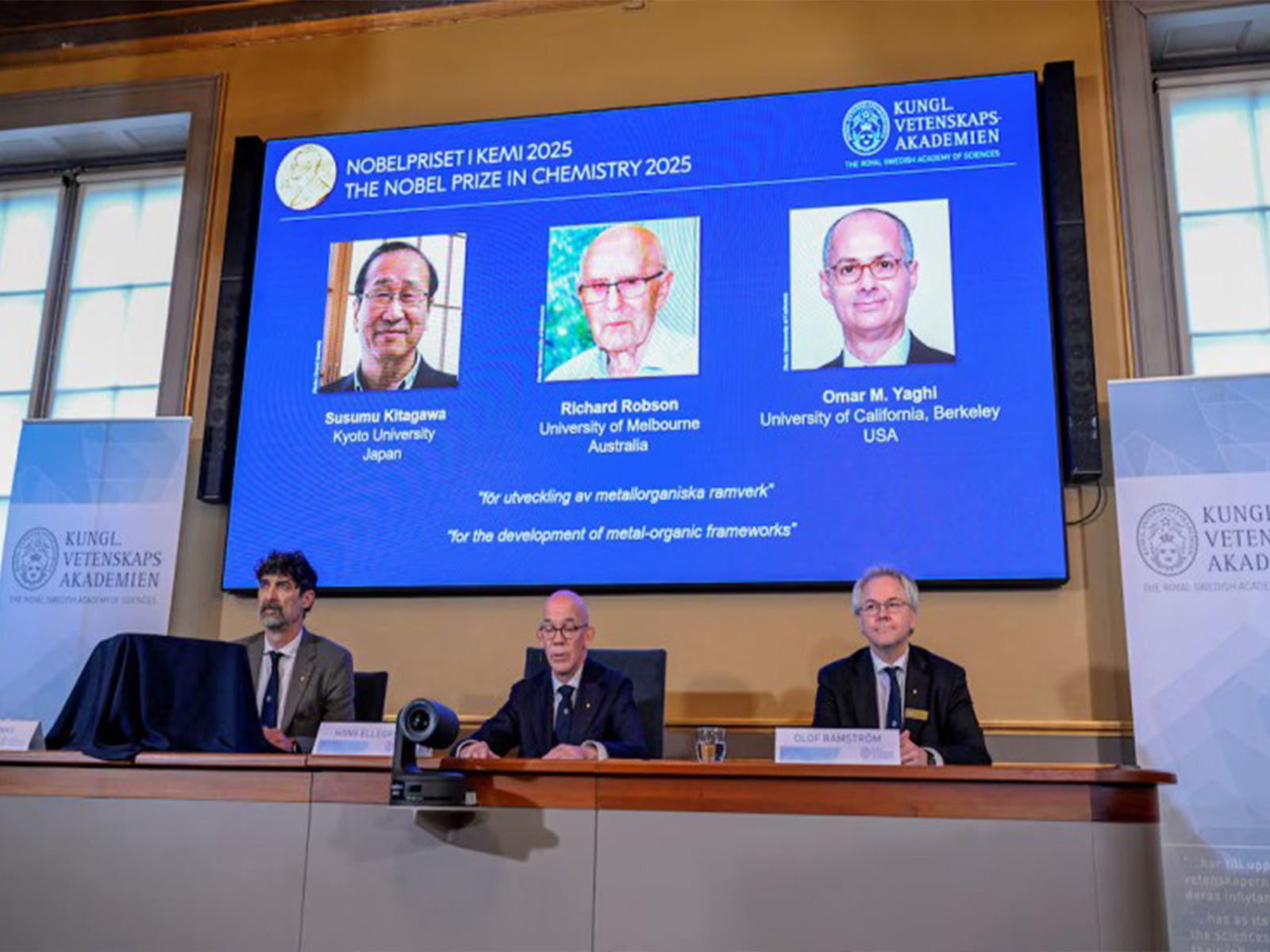
Nobel Prize in Chemistry honors metal-organic framework structure
Oct 09, 2025
Stockholm [Sweden], October 9: This year's Nobel Prize in Chemistry honored three scientists for their work developing structures that have applications in energy storage and environmental pollution.
The Royal Swedish Academy of Sciences yesterday (October 8) announced that this year's Nobel Prize in Chemistry belongs to three scientists: Susumu Kitagawa (Kyoto University, Japan), Richard Robson (Melbourne University, Australia), and Omar Yaghi (University of California, Berkeley, USA), for their work on "developing metal-organic frameworks".
High applicability
The scientists created a new molecular structure with large gaps that gases and other chemicals can flow through, allowing molecules to enter and exit. This structure is called a metal-organic framework (MOF). They have been used in real-world applications, such as harvesting water from desert air, removing pollutants from water, and absorbing CO2.
The unique feature of MOFs is that they can be customized to absorb specific chemicals. Based on the research of Kitagawa, Robson, and Yaghi, other scientists have created a variety of MOF materials for different purposes. MOF materials have been invested in and commercialized by a number of businesses, although most are still on a small scale.
MOFs are already making some headway , according to the Nobel Committee . For example, the electronics industry can now use MOFs to store gases needed for semiconductor manufacturing. Other MOFs can decompose harmful gases, even those used as chemical weapons. In addition, companies are testing materials that can absorb CO2 from industrial plants and power plants, thereby reducing greenhouse gas emissions.
Complement each other
The three scientists worked on separate but complementary projects to create a stable and versatile MOF structure. Robson laid the groundwork in 1989, working with atoms to create a crystal structure with lots of space, but it was unstable. In the following years, Kitagawa's research showed that MOFs could absorb and release gases, while Yaghi created a MOF structure that was stable and adaptable for a variety of uses.
In a statement on October 8, the Nobel Committee wrote: "Through the development of metal-organic frameworks, scientists have given chemists new tools to tackle some of the major challenges facing humanity." The committee said some researchers believe MOFs have enormous potential and could become "the materials of the 21st century."
"I am deeply honored and delighted that my long-term research has been recognized," Kitagawa said in an interview after the Nobel Prize in Chemistry was announced. "I am determined to build beautiful things and solve intellectual problems," Yaghi said. "My dream is to be able to collect air, separate it, and convert it into useful materials using renewable energy," Kitagawa told the Nobel Committee.
Source: Thanh Nien Newspaper

